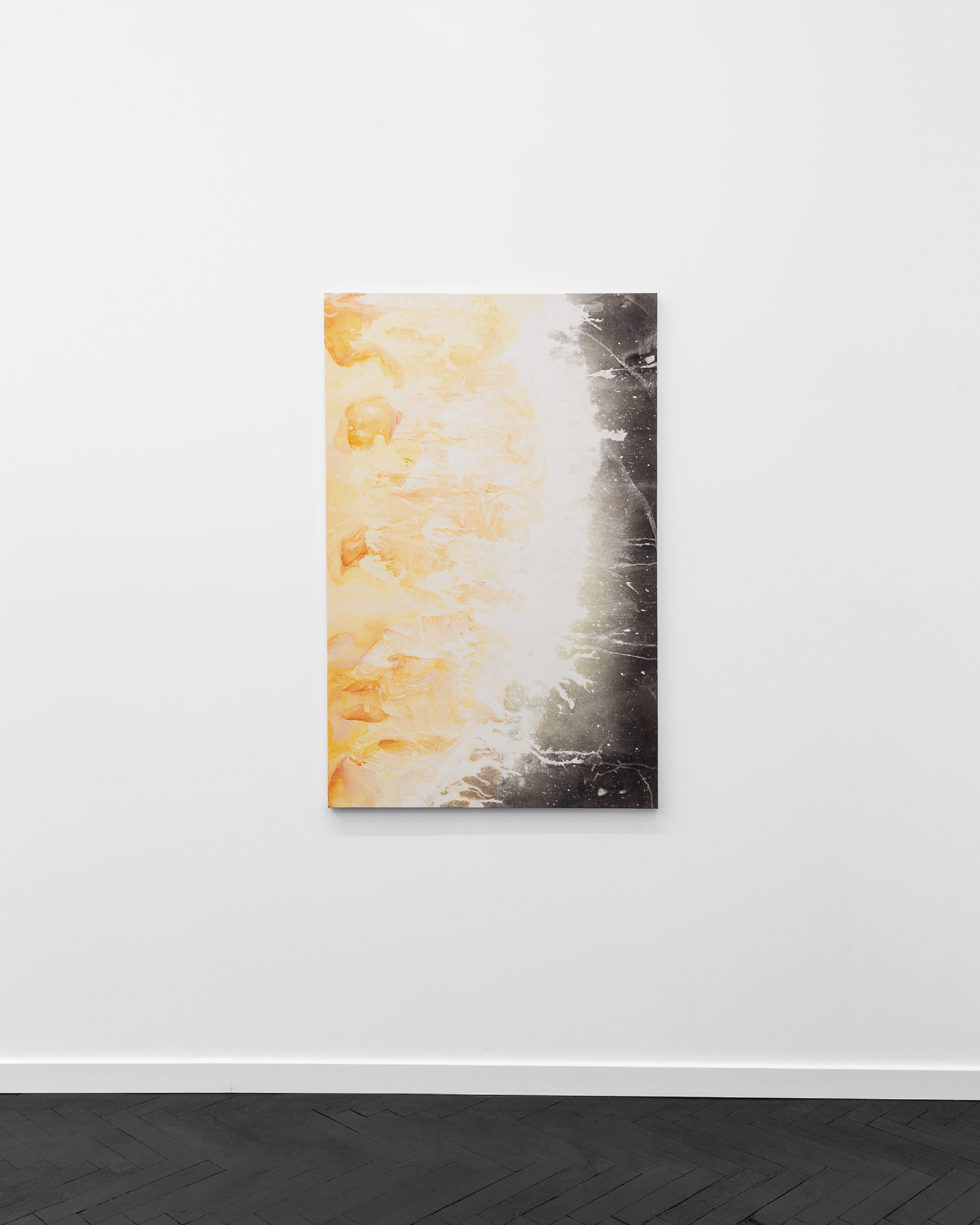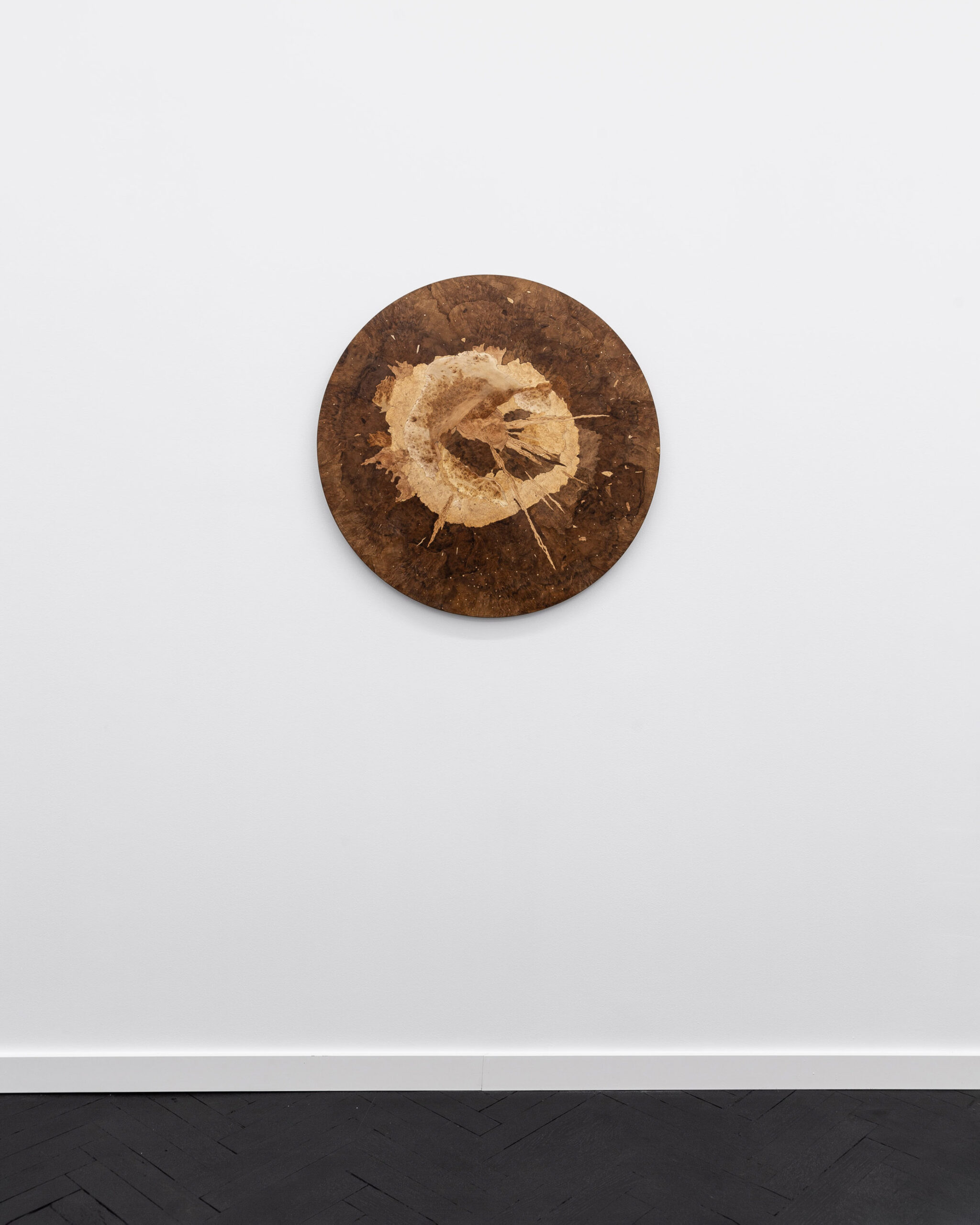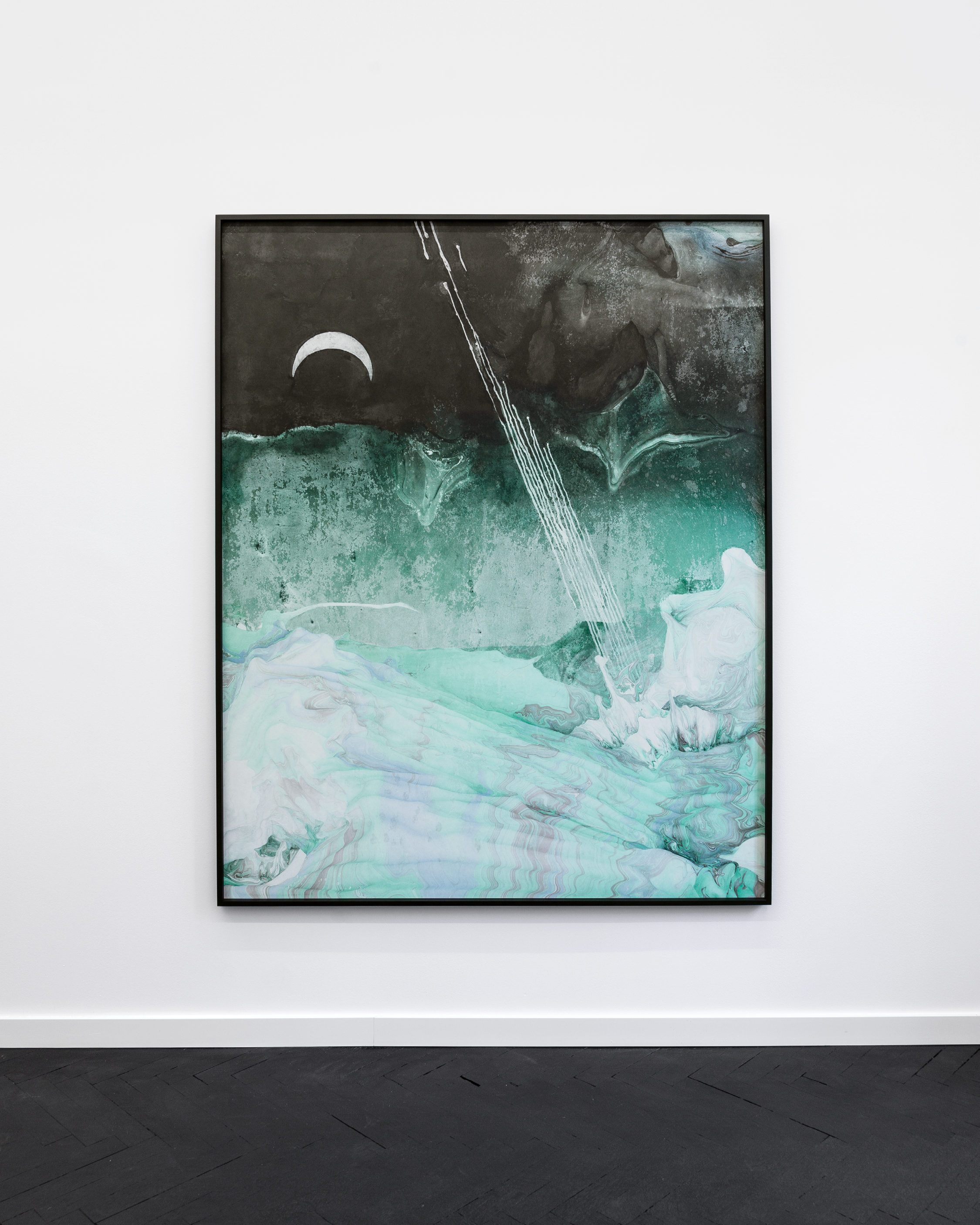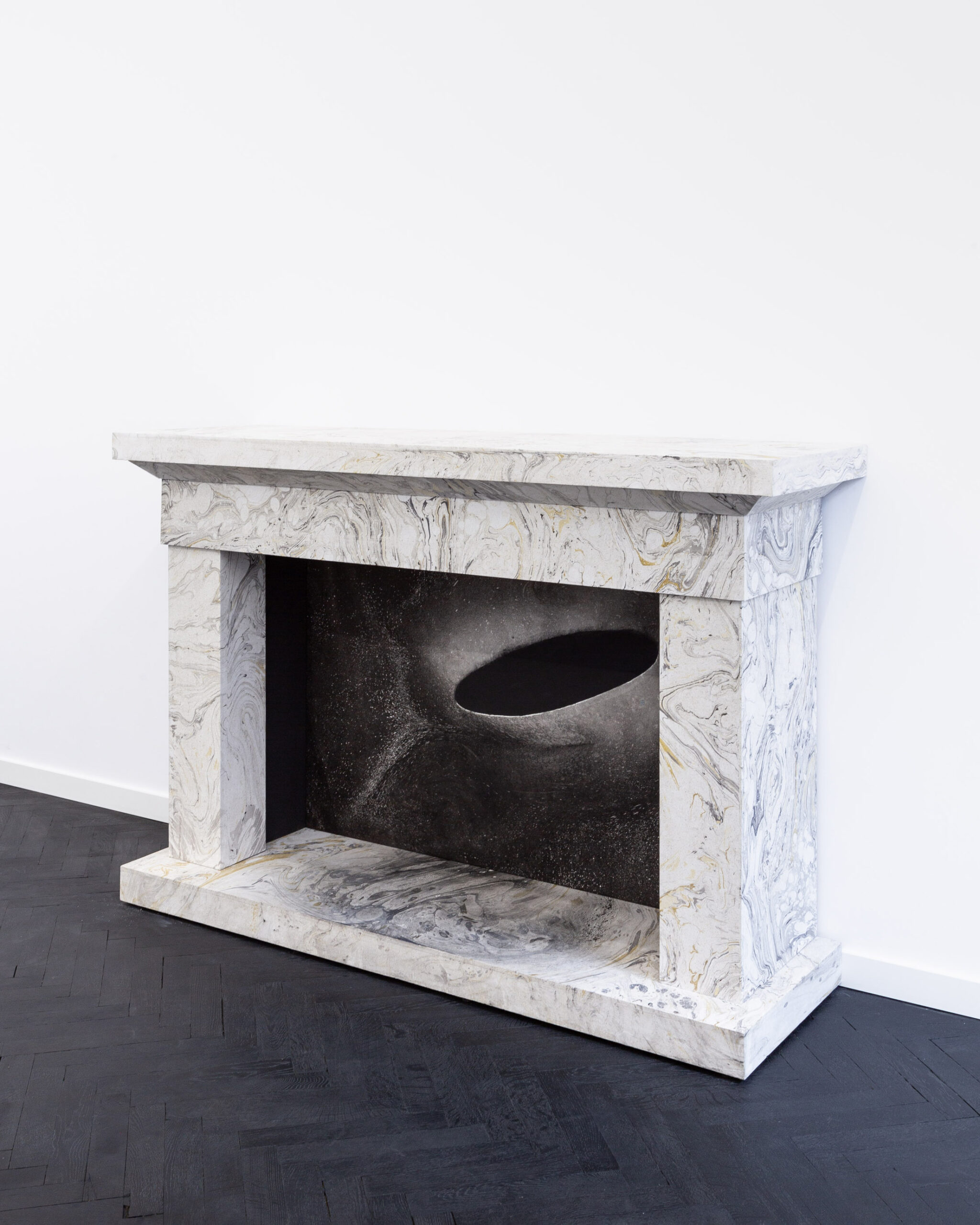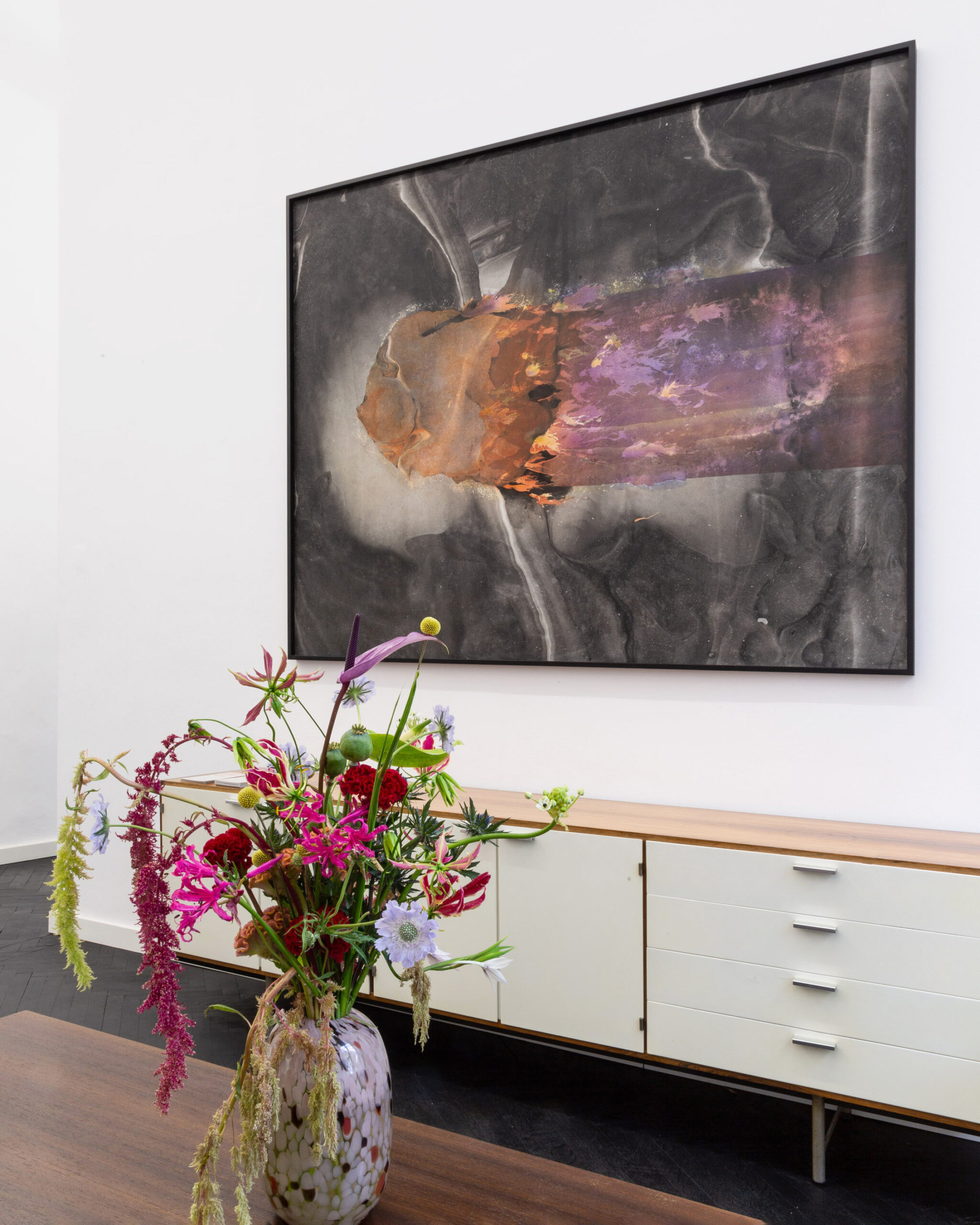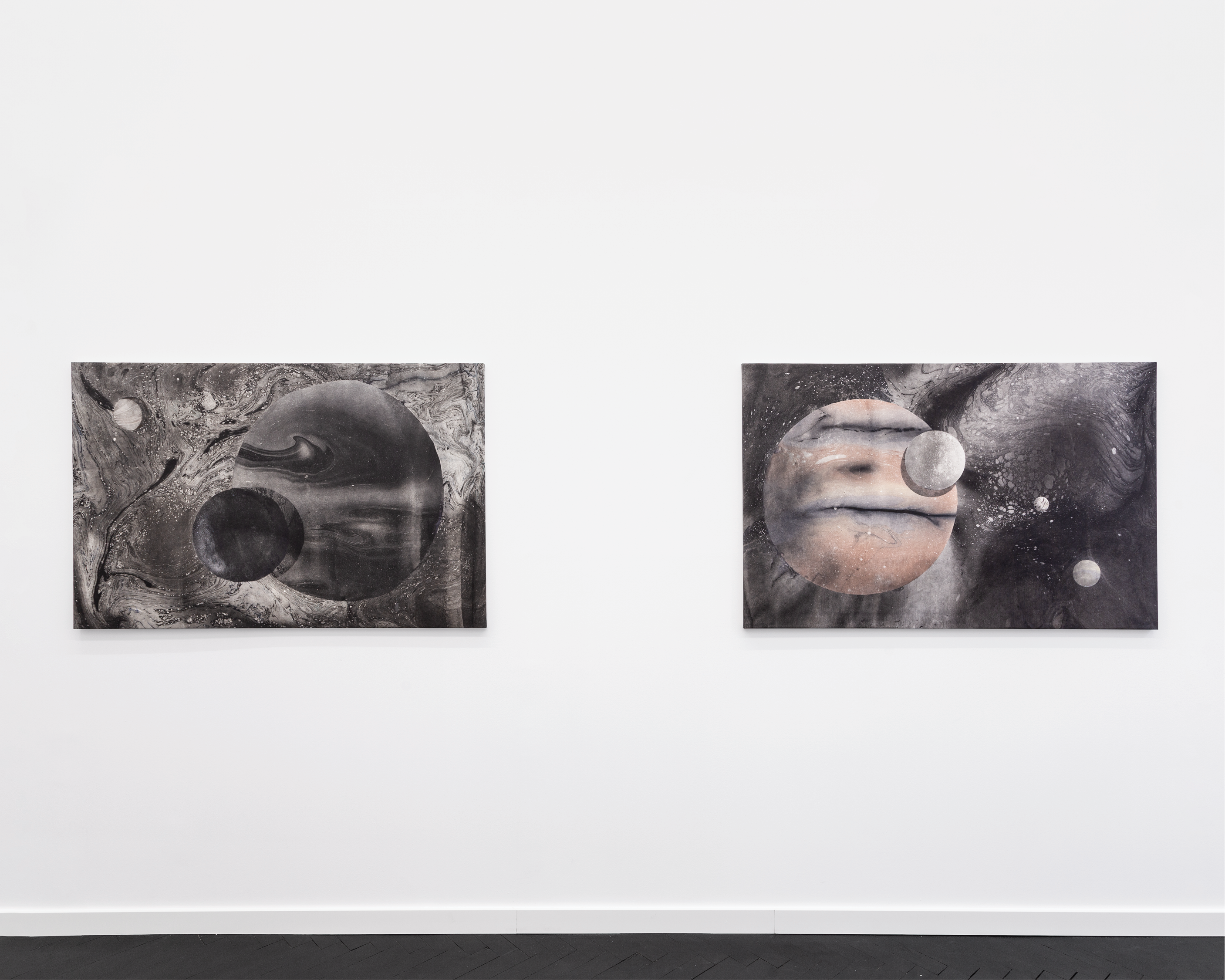As part of this year’s edition of WGW, Gunia Nowik Gallery is pleased to present a solo exhibition by Katarzyna Korzeniecka (born in 1976) – an artist specializing in the techniques of ebru and marquetry, which she masters – as she puts it – in collaboration with nature.
The direct inspiration behind the paintings and woodwork that form the exhibition Thea are, on the one hand the structures of natural forms and processes, which the artist finds analogous to the alchemy of paint spreading on water, the drawing of the interiors of stones, and wood grains in marquetry; on the other hand it is the theory according to which Moon was created as the effect of the collision of two protoplanets:
Earth and Thea, which meant that parts of the planet named after the mythological goddess of light got inside Earth. Gaining awareness of the perspective of cosmos in the context of climate change is equally distressing as poetic. The exhibition was created in dialogue with curator Agnieszka Tarasiuk.
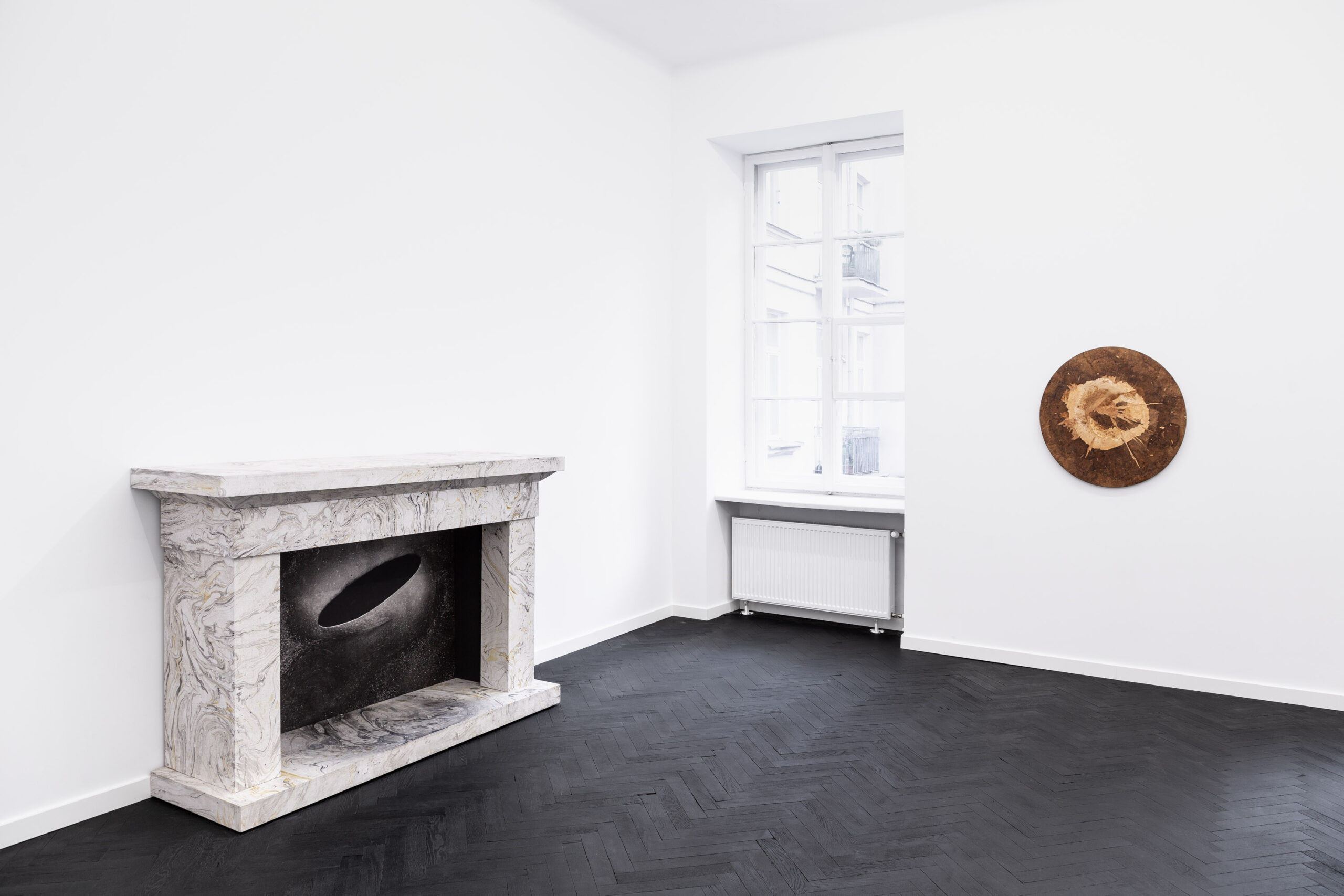


During Katarzyna Korzeniecka's lifetime, the Moon moved 184 cm away from the Earth, and the artist witnessed several of its eclipses, a partial solar eclipse, the passage of Halley's comet, and an accidental meteorite flying close over her head twice.
Over the course of 46 planetary revolutions around the Sun, she gathered knowledge and experience of life on Earth, gave birth to and raised two children, and understood the burden of a woman's social role: the mother-artist and the importance of feminism (Walhalla, 2022). The exhibition Thea is the first solo show of works by Korzeniecka in eighteen years.
The artist has been exploring the ancient artistic techniques of ebru and marquetry for more than ten years. In her most recent works, she uses the acquired skills, that rely on the forces and laws of nature that govern the Universe, to portray her fascination with the Cosmos.
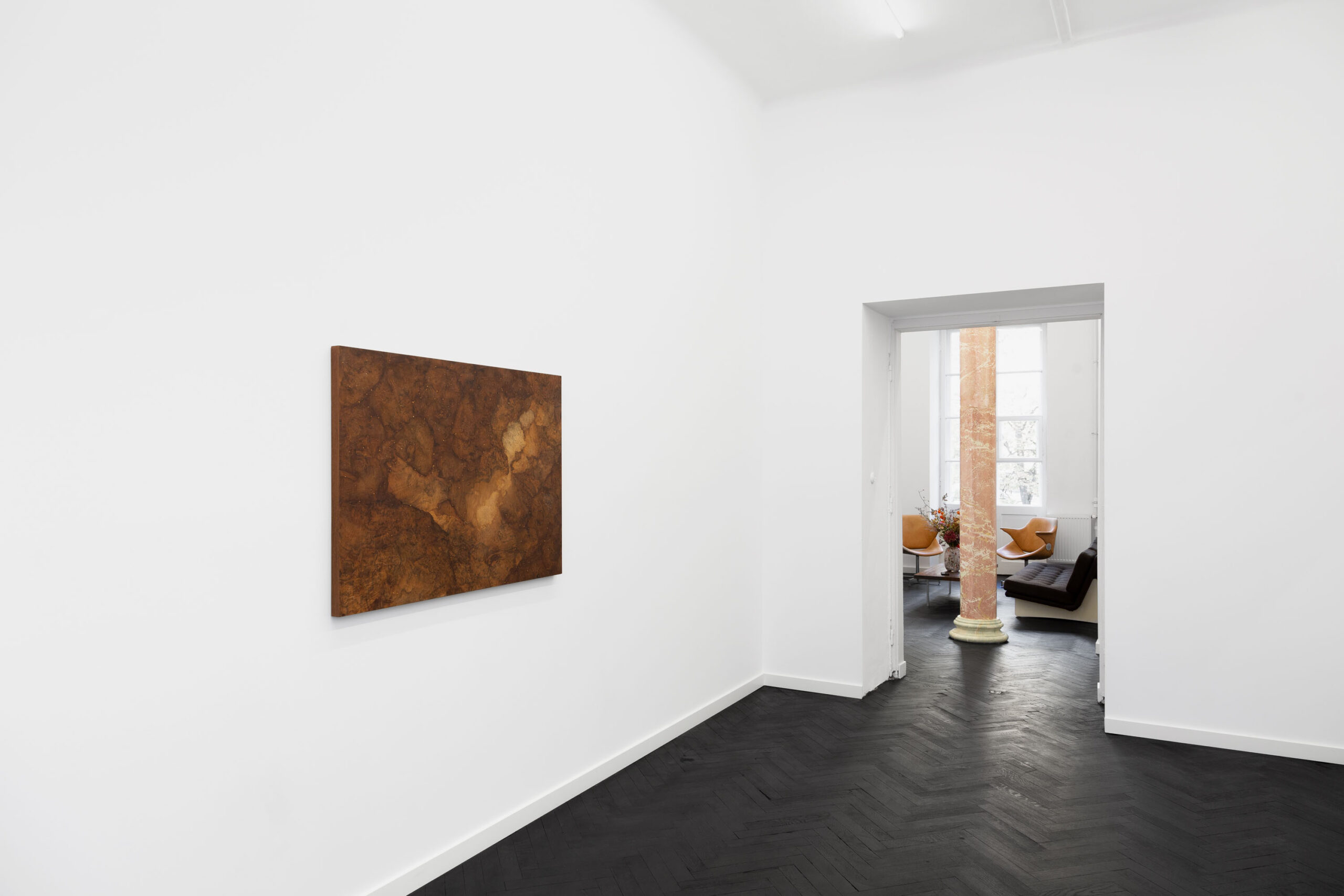


4.5 billion years ago, a rocky protoplanet, twinned with Earth and slightly smaller than it, formed in the young Solar System between Venus and Mars. Astronomers have, in their customary fashion, gone back to Greek mythology and named it after Thea – in honour of the Titaness, who was the mother of Selene, the goddess of the moon. As Thea increased its mass, gravity brought its orbit closer to the Earth’s track, followed by the inevitable collision. Thea’s mantle broke into pieces and her metallic core overflowed into the centre of the Earth. Layers of liquid rock, dust and gas mixed, and in the swirling disk of matter, the present-day Moon was created. Formed in this fashion, lacking its own heavy core, the satellite does not revolve around its own axis, as most celestial bodies do, but revolves in a circular motion around the Earth, always facing it in the same direction.
The Earth–Moon system, unique on a cosmic scale, has created completely unique conditions on our planet. The Earth’s vast, hot core enables plate tectonics – the continuous movement of the Earth’s crust and the drift of continents. The Earth’s axis, skewed as a result of the event, guarantees the phenomenon of the seasons, as well as the polar day and night. Large and close to the planet, the Moon stabilises the position of the Earth’s axis and at the same time its climate, while the force of its attraction generates the tides of the oceans. Hot after the collision, the satellite orbited much closer to the Earth. It is now moving away from us at a rate of 4 cm per year. Four billion years ago, the proto-ocean was therefore subject to even stronger tides. Large areas of land underwent a cycle of continuous flooding and drying, which enabled the synthesis of the first amino acids and the emergence of life. Had young Earth not swallowed her sister’s metallic core, she would probably never have become fertile.
The same physical phenomena that maintain the movement of granite landmasses on the basaltic crust allow ornamental images to emerge. Originating in China, the technique of transferring patterns created on the surface of water onto paper takes advantage of differences in density, surface tension and gravity. Fields of colour swirl and circulate on the surface of the water, collide with each other and separate like continents on a globe. All one has to do is take them off the surface of the water by applying a piece of paper – or a plaster column – to it.
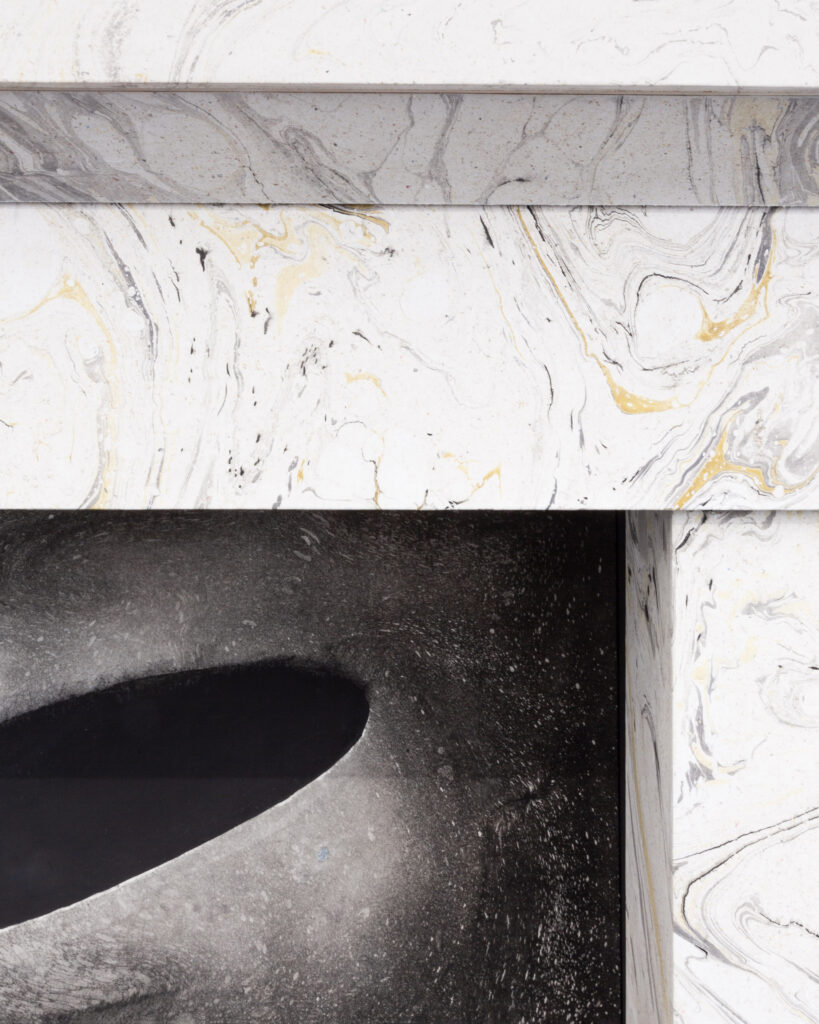

The oldest marbled papers date back to the Tang Dynasty (618–907). From China, the tradition moved to Japan and, along the Silk Road, to the Mediterranean. To create Japanese Suminagashi, one needs only paper, water and ink. The Middle Eastern Ebru requires more ingredients. The water is thickened with tragacanth gum extracted from the Anatolian scrub, which increases the surface tension of the water bath and, when dry, forms a glossy, varnish-like coating on the image. Pigments extracted from grated clays and pollen, to which buffalo gall has been added, are poured onto the water. The gall ensures that the colours do not mix on the surface of the water. Chicken gall helps isolate white spots, while fish gall helps create grainy effects.
Ebru flourished in the Ottoman Empire as a method of creating meditative images. In Sufi sects, abstract pattern-making was practised as a path of self-development. In the 17th century, the technique of paper marbling reached Italy and became part of the Middle Eastern heritage in Western Europe, but the ornaments, devoid of the spiritual symbolism of Islam, were treated as a purely decorative element. Thus they hid on book covers and objects meant to pretend to be marble. Abstraction had to wait until the 20th century to be recognised by the Northern and Western art.
What do animal secretions, calligraphing dervishes, Florentine bookbinders and drifting continents have in common? Why do the fields of paint on water resemble space, wood, microscopic close-ups of cells or the images that form under the eyelids after gazing at the sun? Fractal geometry answers these questions with the Mandelbrot set formula. Thanks to the discovery of fractals, it is possible to mathematically describe and prove the principle of similarity in the shape of galaxies, continents, trees, corals, as well as in the layout of the lungs and the circulatory and nervous systems of vertebrates. Fractal geometry is deeply inscribed in the structures of the mind and is activated under the influence of psychoactive drugs. Staring at animated fractal graphs treats the effects of trauma, much like hallucinogens taken with a proper “Set and Setting”.
Agnieszka Tarasiuk
